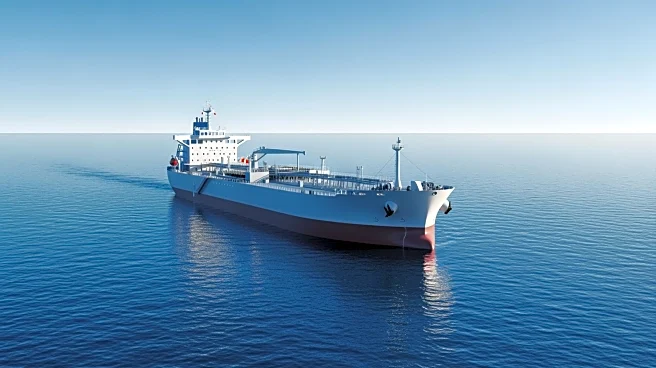What's Happening?
The tanker market has experienced a significant increase in orders due to a combination of factors including high freight rates, increased sanctions, and resilient oil demand. The market has seen a tightening supply-demand balance, which has made it more
susceptible to changes in ton-mile demand. Owners have been encouraged by strong cashflows to invest in fleet growth and renewal. The current tanker orderbook stands at 16% of the existing fleet, with recent trends showing a spike in orders, particularly for larger crude oil tankers.
Why It's Important?
The surge in tanker orders reflects the industry's response to geopolitical and economic pressures, such as sanctions and oil demand fluctuations. This trend could impact global shipping dynamics, influencing freight rates and fleet compositions. The increased orderbook suggests confidence in future market conditions, but also poses risks of oversupply if demand does not meet expectations. Stakeholders in the shipping industry, including shipbuilders and oil companies, may benefit from increased activity, while potential oversupply could challenge market stability.
What's Next?
The tanker market's future will depend on geopolitical developments, oil demand trends, and the ability of the industry to manage fleet growth. Shipowners may continue to place new orders if current market conditions persist, but they must remain cautious of potential oversupply. The timing of sanctions relief and changes in oil demand will be critical factors influencing future market dynamics.
Beyond the Headlines
The cyclical nature of tanker contracting highlights the challenges of predicting market trends. The industry's reliance on geopolitical factors underscores the importance of strategic planning and risk management. Long-term oil demand growth may be limited, necessitating careful consideration of fleet expansion strategies.













